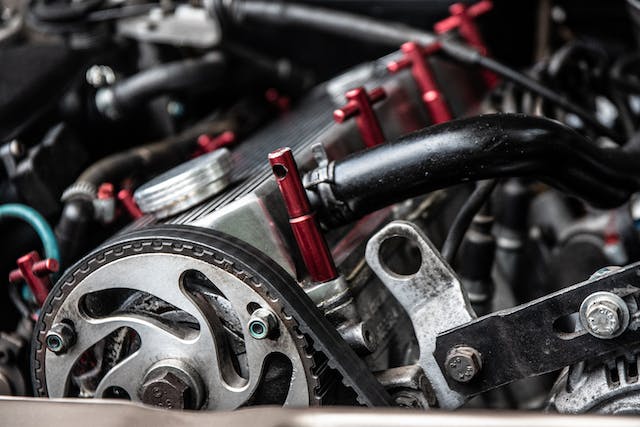All vehicles require routine maintenance. Upkeep is particularly important for heavy-duty vehicles. They work harder than standard passenger vehicles, so they’re subjected to more wear and tear. At the same time, they’re more complex and expensive to repair than other types of vehicles. Regular maintenance and promptly addressing issues as they arise can help keep repair costs and downtime at a minimum.
Several points should be covered during routine maintenance and repairs, many of which require finding nice international truck parts for sale. Replacing the timing belt is one of the more crucial. Timing belts help keep camshafts and crankshafts working in sync. That, in turn, keeps engines running smoothly and efficiently. Timing belts tend to succumb to wear and tear over time. If they’re not replaced promptly, they can lead to serious problems. Be on the lookout for the following five warning signs that it’s time to change your truck’s timing belt.
High Mileage
Heavy-duty engines take on a great deal of mileage. That can certainly take a major toll on virtually all of their components. The timing belt is no exception. As mileage racks up, the timing belt gradually deteriorates. It can become vulnerable to cracks, fraying, and weakening.
Checking the timing belt frequently is essential regardless of how many miles it has endured. Damage and wear notwithstanding, manufacturers generally recommend replacing the timing belt every 60,000 to 100,000 miles. It’s always better to stay a step ahead of the damage than to deal with its aftermath later on.
Unusual Noises
Listen for unusual sounds coming from the engine too. Those can sometimes signal timing belt issues. Squealing or rattling sounds while the engine is running could indicate a worn-out or improperly positioned timing belt. Sounds like those are caused by the belt slipping or rubbing against components it shouldn’t be. Ignoring these warning signs can lead to significant engine damage, so addressing them promptly is crucial.
Visible Damage
Inspecting the timing belt for obvious damage is also essential. Be sure to cover the timing belt in your pre-trip and post-trip inspections. Look for cracks, frayed spots, missing teeth, and other signs of wear. Look for oil or coolant leaks near the belt as well. Those can cause a timing belt to deteriorate even faster than it would under normal strain. Any visible damage should be taken care of immediately to prevent further issues.
Reduced Engine Performance
Bad timing belts can impact your truck’s performance. Engine misfires, rough idling, and difficulty starting the truck can all be signs of timing belt problems. If those issues arise, you could see a decline in power, increased emissions, and reduced fuel efficiency. Replacing the timing belt should bring your truck’s performance back up to par if it’s the cause of those issues.
Scheduled Maintenance
Another indication that it’s time to replace the timing belt is your regular maintenance schedule. Consider being proactive about replacing the timing belt during routine maintenance, especially if it’s getting close to the recommended timeframe for doing so. Even if the timing belt isn’t looking worse for wear, it may be best to go ahead and change it out. After all, you’ll need to do so before long anyway.
Keeping Your Truck in Top-Notch Shape
Numerous aspects come into play when keeping a heavy-duty truck in optimal condition. Changing the timing belt shouldn’t be overlooked. Keep watch for the signs mentioned here to stay on top of timing belt damage. If you find problems, be sure to address them right away to prevent more extensive and costly engine damage. Keeping the timing belt in good condition is a proactive, cost-effective way to help keep your truck running well for as long as possible.










